The relatively small Western European country of Portugal has something for everyone. Whether you’re after tasty cuisine, enticing cities, or stunning beaches, you’ll find it there. While it may neighbor Spain, Portugal has its own distinct culture, and it’s this uniqueness that makes many people fall in love with it.
There’s no time to lose planning your first visit to this wonderful country. The challenge with first-time visits is figuring out where to go and how long to spend in each place. This thorough Portugal itinerary gives you a full breakdown of how to see the best places to visit in Portugal in 10 days. That’s the perfect amount of time to really get to know the country, so let’s dive right into our guide to discovering Portugal in 10 days.
Best Time to Visit Portugal
One of the most important things you need to be mindful of when planning a trip to Portugal is the timing of your visit. Portugal may be in the south of Europe and be known for its sunny weather, but it still experiences four seasons. You’ll also want to take into account Portugal’s high season if you’re looking to avoid higher hotel rates and crowds of tourists.
Summer is the busiest time to visit Portugal, so from July to early September you can expect plenty of other tourists soaking up the warm weather and filling the beaches. Things are much quieter if you travel in January or February, but you’ll also be met by cool, cloudy weather.
To strike a balance between great weather and affordable accommodation, the best time to visit Portugal is April to June or mid-September to November. This is the shoulder season and offers the best of both worlds.
How to Get Around Portugal
Like so many destinations in Europe, the most convenient way to get around Portugal is by renting a car. Rental cars give you the freedom to travel when and where you want and don’t force you to fit your plans into a bus or tour schedule. The obvious downside is trying to navigate in a foreign country and deal with the eternal hassle of finding parking. If you do get a rental car, make sure to check if your accommodation offers parking.
Recommendation: To get the best rate on your rental car, we recommend you check out RentalCars.com. The company searches and compares rental prices from all major rental companies in Portugal, so you can rest assured that you’re getting the best possible price.
Of course, there are other ways of getting around when you’re visiting Portugal. Each of the main destinations in this itinerary are covered by train and bus networks, as are many of the day trips. Public transport isn’t too expensive in Portugal, and the urban metro lines out of Porto and Lisbon are incredible value. Train timetables and fares can be found at the CP website.
Getting around by bus is usually cheaper but also slower than by train. The two largest bus companies in Portugal are Rede Expressos and Eva Transportes (Algarve only).
Accommodation in Portugal
An important part of any trip is working out where to stay. The right accommodation makes sightseeing easier and more enjoyable. Each destination has a different layout, but typically the more central your accommodation is the closer it is to attractions and the more expensive it is. With Portugal growing in popularity all the time, you’ll definitely want to book in advance, especially if you plan on visiting during high season.
The good news is that since Portugal is a well-established tourist destination, you’ll have plenty of accommodation to choose. Whether you’re seeking the cheapest hostel dorm or a posh hotel, there will be something for you. Backpackers and budget travelers should look at Hostelworld for hostels with affordable dorms and private rooms, as well as at our carefully curated list of the best hostels in Lisbon.
For everything from hotels to guesthouses and bed & breakfasts to apartments, you’ll want to head to Booking.com. Each destination has a broad selection of places to stay, with more choices the earlier you book. Alternatively, Airbnb is a smart place to look if you’re after a local experience, especially since you save money with our $55 off coupon!
Because pouring through pages of accommodation listings can be a bit dull, we’ve included recommendations for places to stay at each stop on this Portugal itinerary.
The Perfect 10-Day Portugal Itinerary
The ultimate goal of this guide is to make sure you experience the very best of Portugal during your time there. Following is a list of the best things to do in Portugal, arranged so you have a ready-made Portugal travel itinerary. All you have to do is follow it to be taken on a fantastic vacation right across the country. Along the way, you’ll get to visit Portugal’s two largest cities, various smaller cities and towns, and the country’s epic coast.
However, before we get to our Portugal itinerary, we just wanted to remind you to purchase travel insurance. You never know what will happen and, trust us, you do not want to get stuck with thousands of dollars in medical bills. As a wise man once said, “If you can’t afford travel insurance, you can’t afford to travel.” So don’t leave home without it.
SafetyWing offers travel insurance for only about $10 a week, making it a no-brainer to get. You can get a quick, non-binding quote below:

SafetyWing is, of course, not the only option available. Two other popular alternatives are World Nomads and Heymondo.
Okay, let’s get back to our Portugal guide, shall we? Below you have all the information you’ll need for each day of your trip, showing you exactly what to do in Portugal in 10 days.
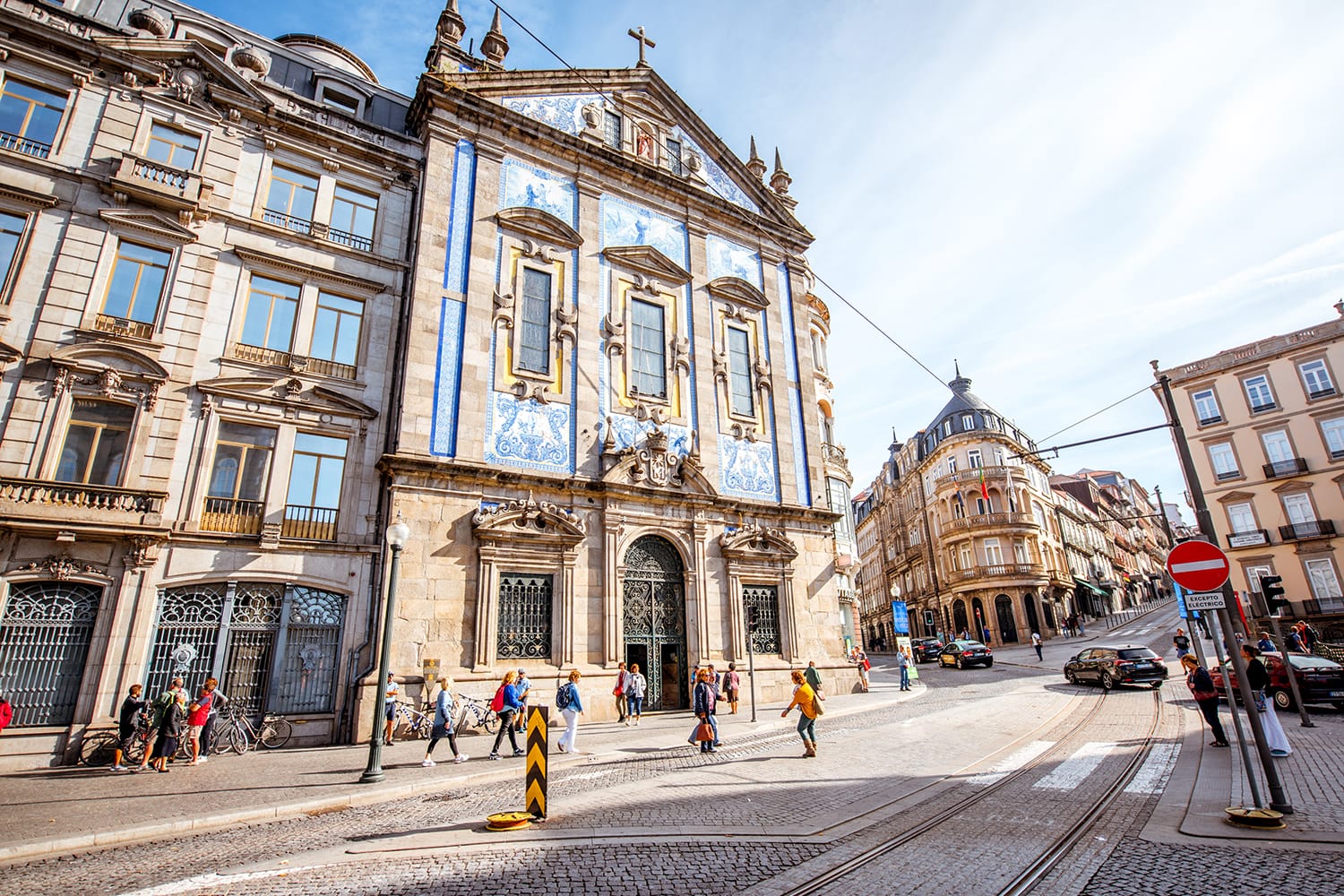
Day 1: Porto
Begin your Portugal itinerary in the northern city of Porto. This historic city along the Douro River is adored for its character and the port wine that it is so famous for.
Start your exploration on the Avenida dos Aliados, a sloping boulevard that links up several squares in the center of downtown Porto. As you head downhill, you’ll pass elegant buildings like the City Hall of Porto. Just off the bottom end of the avenue, you’ll find São Bento Train Station, probably one of the most beautiful railway stations in the world, thanks to its interior, covered wall-to-wall in traditional azulejo tiles.
Porto is adored for its incredible cityscape, so quickly hunt down some views at the secluded Miradouro da Vitoria Viewpoint. The immediate surroundings may not be much to look at, but the panorama of Porto is worth it. From there, descend down the hill to the lively Ribeira riverfront, lined with authentic townhouses and numerous tour companies offering the classic 6 Bridges River Cruise that ventures up and down the Douro River.
Leaving the riverfront for the time being, climb the quaint city streets past the Jardim do Infante Dom Henrique and the Mercado Ferreira Borges market. Eventually, you’ll reach the stunning Livraria Lello Bookstore, whose lavish interior is said to have inspired author J. K. Rowling when she was writing Harry Potter. Head over to the Clerigos Church Tower, which is nearby and which features both a beautiful interior and fantastic views from the top of its tower. You can buy your entrance ticket to the tower here in advance.
Best Places to Stay in Porto:
PILOT Design Hostel • Pao de Acucar Hotel • RVA – Porto Central Flats
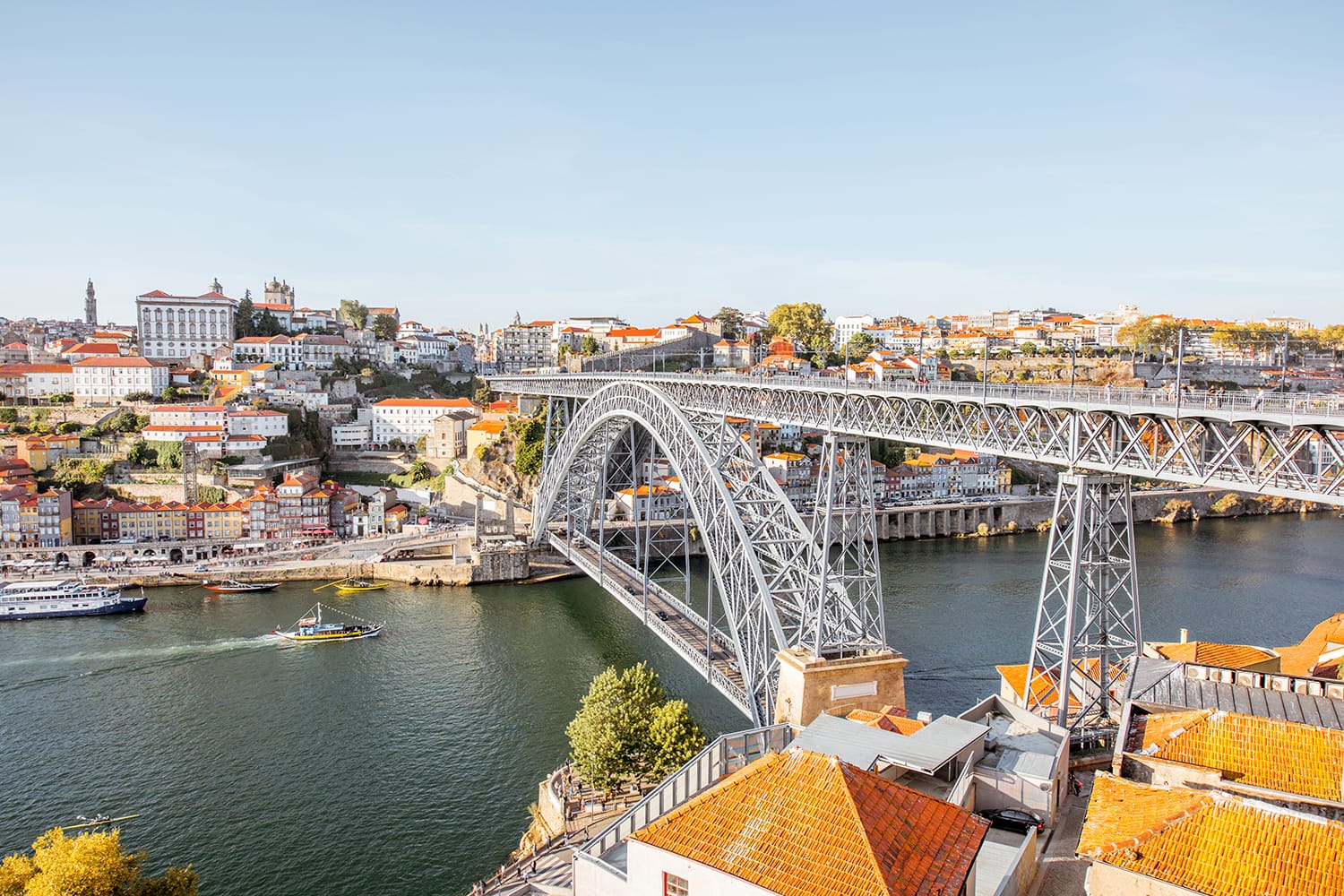
Day 2: Porto
On day two in Porto, you still have plenty more of the city to explore and uncover, so start by heading to the dramatically named Chapel of Souls. Located in one of the city’s busiest shopping areas, this small church is hard to miss thanks to its blue and white exterior made up of countless azulejo tiles. Speaking of shopping, make your way to the vibrant Bolhão Market, housed inside the open-air center of an old neoclassical building. Its humble, old-school approach reflects how Porto has remained unchanged as many European cities modernize.
In a city like Porto, you’re going to come across plenty of churches, but since each has its own distinct look, visiting them never grows old. Continuing down the road from the market, you’ll soon reach the Church of Saint Ildefonso, a graceful Baroque building again decorated with traditional ornate tiles. Then there’s the Sé do Porto, the city’s cathedral, which looks more like a fortress than a place of worship. Perhaps the best thing about the cathedral is its fantastic vantage point out across the orange rooftops of Porto.
It’s now time to cross the Douro River, which is best done by walking across the colossal metal Luis I Bridge. A definitive part of Porto’s cityscape, this bridge was unsurprisingly designed by a student of Gustav Eiffel of Eiffel Tower fame. Once across the river in the city of Vila Nova de Gaia, take the Teleferico de Gaia cable car to quickly head down to its waterfront.
It’s there that you’ll find warehouses full of the city’s iconic port wine and traditional rabelo boats in the river that once transported it. You can take your pick of larger and more boutique port producers to visit for some wine tasting, but an easy choice is the Ferreira Cellars, housed inside an old convent. After some port, take the cable car back up and visit the Mosteiro da Serra do Pilar monastery for an epic sunset. You can find more details on spending time in Porto in our dedicated two day Porto itinerary.
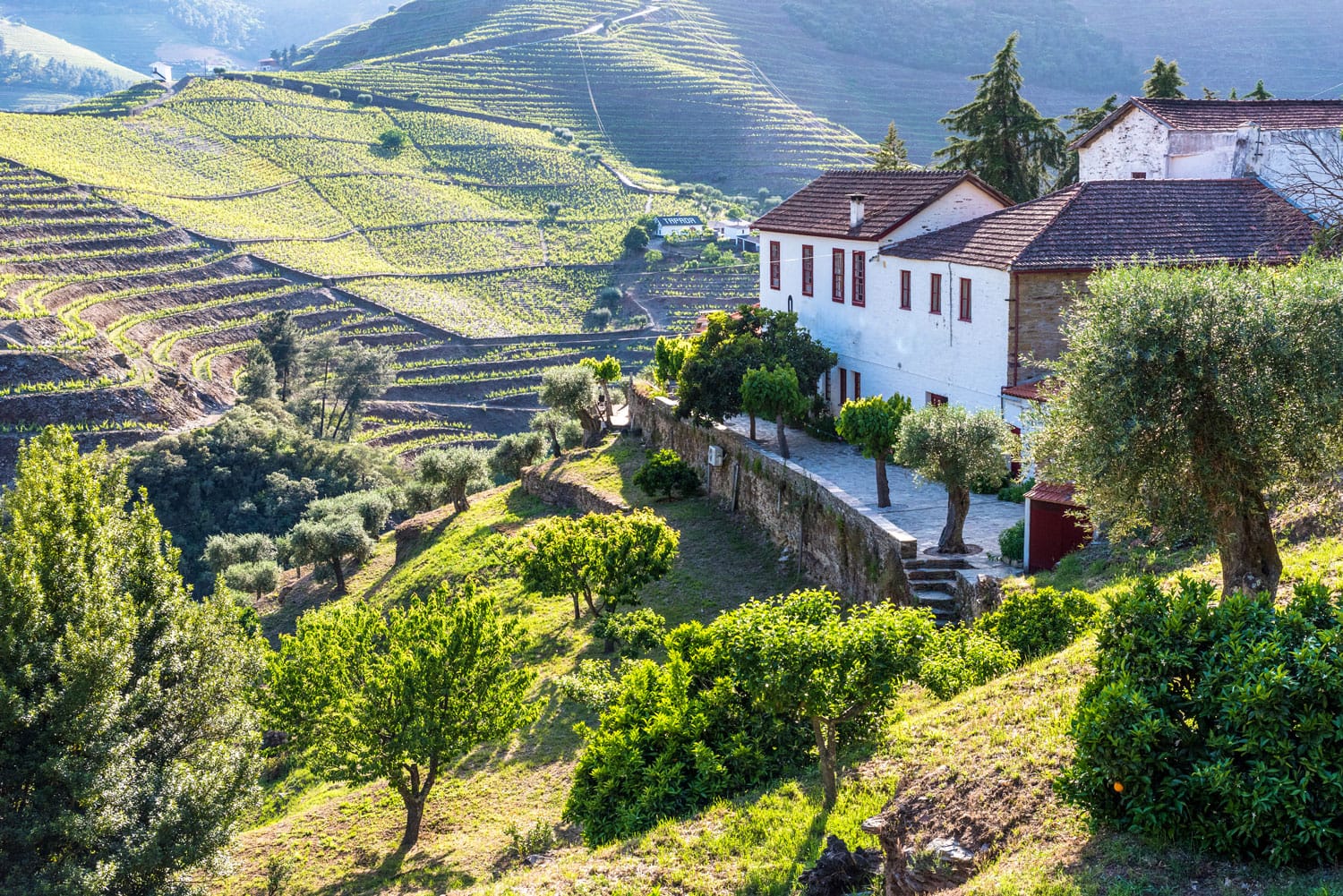
Day 3: Porto
There’s still more you could do in and around Porto, so you have the day to shape your Portugal itinerary as you’d like. Porto may be the largest city in northern Portugal, but the region is home to all sorts of wonderful destinations. Many of these places can be visited as a day trip from Porto. The best options include:
- Douro Valley: Having tasted some of the city’s famous port wine, this is where to go if you want to see where it and other local wines are made. Upstream from Porto, there are loads of vineyards that line the banks of the serene Douro River. Spending the day exploring the Douro Valley, you have your pick of wineries at which to taste test. There’s also the incredible rugged scenery to enjoy, best done on a leisurely boat ride down the river. You can book guided tours of the valley that include winery visits, a cruise, and a filling Portuguese lunch. Book tour here.
- Guimarães: Although one of the smaller cities in northern Portugal, Guimarães is both beautiful and historically important. Wandering its central Old Town, you’ll come across a healthy dose of traditional homes and charming squares. The city is also home to the wonderfully medieval Guimarães Castle, with its high stone walls, as well as the impressive Palace of the Dukes of Braganza that’s now an informative local museum. You can also book a guided tour that includes Guimarães from Porto.
- Braga: Despite being Portugal’s third largest city, Braga is not yet that well-known among tourists. When people do visit the city, it’s mostly to see the enchanting Bom Jesus do Monte sanctuary which is found on the city’s outskirts. The sanctuary features churches and gardens, but most people come for the grand staircase that leads up the hill to them. Over in the city’s historic center you can see some lovely heritage buildings such as the Braga Cathedral and the Archbishop’s Court. Braga is easy enough to reach by train, but can also be visited on a guided tour from Porto.
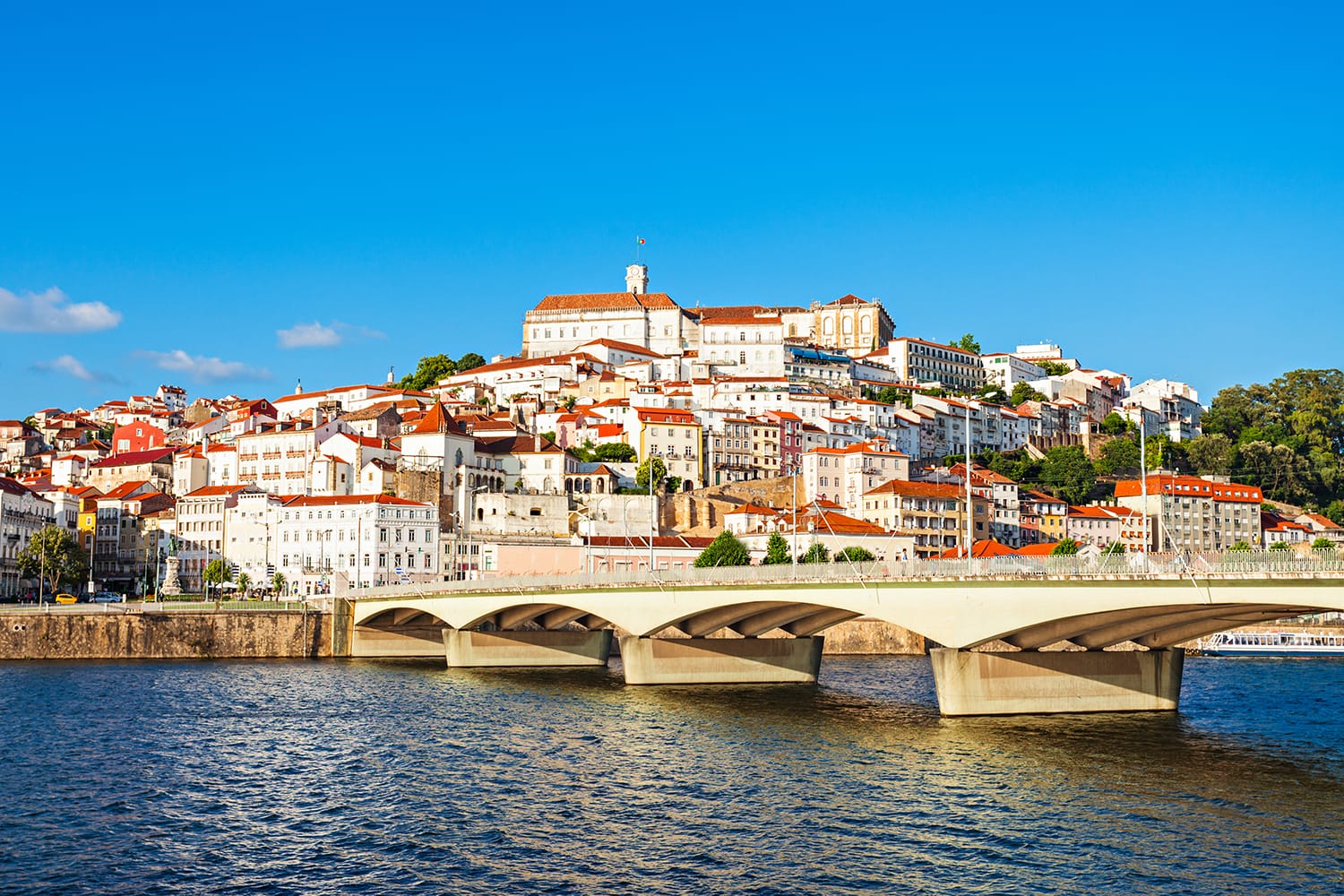
Day 4: Coimbra
Journeying south, your next stop is the city of Coimbra. The capital city of Portugal during the Middle Ages, Coimbra’s greatest claim to fame is its distinguished university. One day is the perfect amount of time to see the city’s main sights before moving on.
Since it’s so important to the city, begin with the hilltop campus of Coimbra University. Dating from 1537, the oldest parts of the university are found in the distinguished buildings of the Coimbra Royal Palace. While the main courtyard, grand halls, and classrooms are all quite interesting, the real highlight here is the breathtaking Joanina University Library. That being said, the views from its terraces and tower aren’t bad either.
Walking down into the historic center of the city, you’ll soon realize that Coimbra has quite the historic pedigree. First there’s the Se Velha, Coimbra’s old Romanesque cathedral that dates from the 12th century. You’ll soon reach the main pedestrian street of the city Rua Ferreira Borges, where you’ll find the Santa Cruz Monastery and its tiled interior. It’s around here that you’ll spot the faded yellow exterior of the Cloister of Manga, an ornate structure surrounded by gardens and fountains.
Lastly, you have several religious sites across the Mondego River that are worth seeking out. These include the ruins of the Monastery of Santa Clara-a-Velha, which was destroyed by flooding from the nearby river, and its replacement, the Monastery of Santa Clara-a-Nova. While not a lot is left of the old monastery, you can find the 17th-century replacement further up the hillside and discover its chapels and cloisters.
Best Places to Stay in Coimbra:
Serenata Hostel • Hotel Oslo • Vila Gale Coimbra
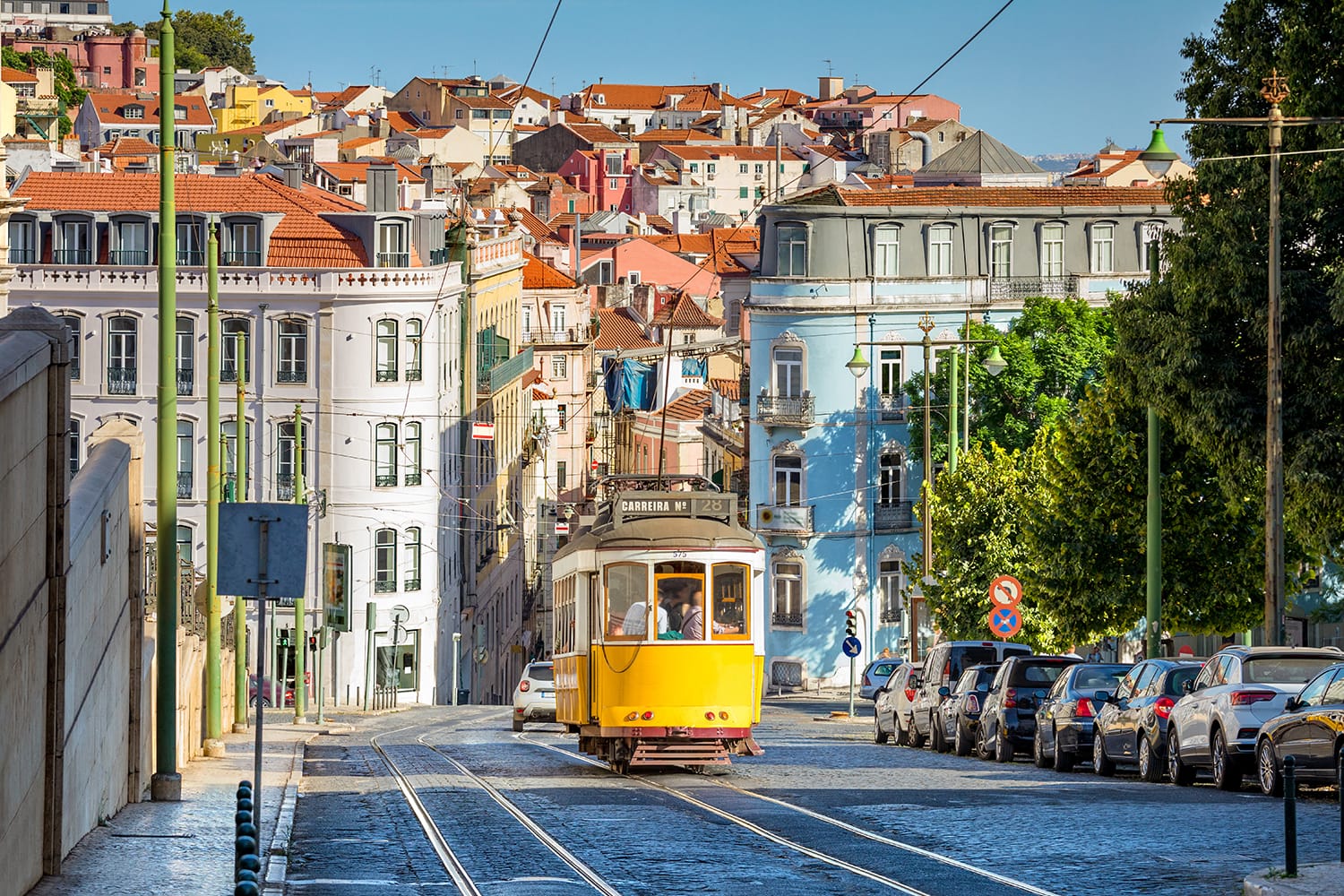
Day 5: Lisbon
Down along the Atlantic Coast near the center of Portugal, you come to the country’s capital, Lisbon. Surrounded by hills and the Tagus River, there are plenty of places to admire in this Old World city.
Set out first to Rossio Square in the city center to get a feel for city life. While the National Theater is the big landmark there, it’s the fountain and wavy patterns of the square’s tiles that really make a strong impression. Nearby you can enjoy your first of probably many funicular rides with the Ascensor da Glória up to the Garden of São Pedro de Alcantara. It’s there that you can get your first proper view of Lisbon’s dynamic cityscape, all the way out to the castle and Tagus River.
Recommendation: Save time and money by purchasing a Lisbon Card. The card provides free admission to the top attractions as well as unlimited access to the public transport system. Well worth the price!
Having returned to Rossio Square, head into the heart of Lisbon and visit the Baixa district, Lisbon’s downtown area and shopping hub. It’s there you’ll find the Santa Justa Lift, an antique elevator that dates from 1902 and still works perfectly. From the elevator it’s a short walk to the open-air ruins of the Carmo Convent. It can be a little surreal standing in what was once a church and peering up into the blue sky above.
Finding your way down into Baixa again, follow the grid of streets until you reach the wide-open Praça do Comércio. This waterfront plaza is a simply beautiful spot, thanks to the Monument to King José I and the ornate Rua Augusta Arch. It’s from there that you can hop on one of Lisbon’s iconic trams and ride over the narrow streets of the Alfama neighborhood. This part of Lisbon is home to some of the city’s oldest houses, and visitors often fall in love with its authentic vibe.
Alfama also happens to sit directly beneath the São Jorge Castle, which you’ll definitely want to pay a visit to, if for no other reason than for the phenomenal views it offers.
Best Places to Stay in Lisbon:
Yes! Lisbon Hostel • Hotel Alif Avenidas • Lux Lisboa Park
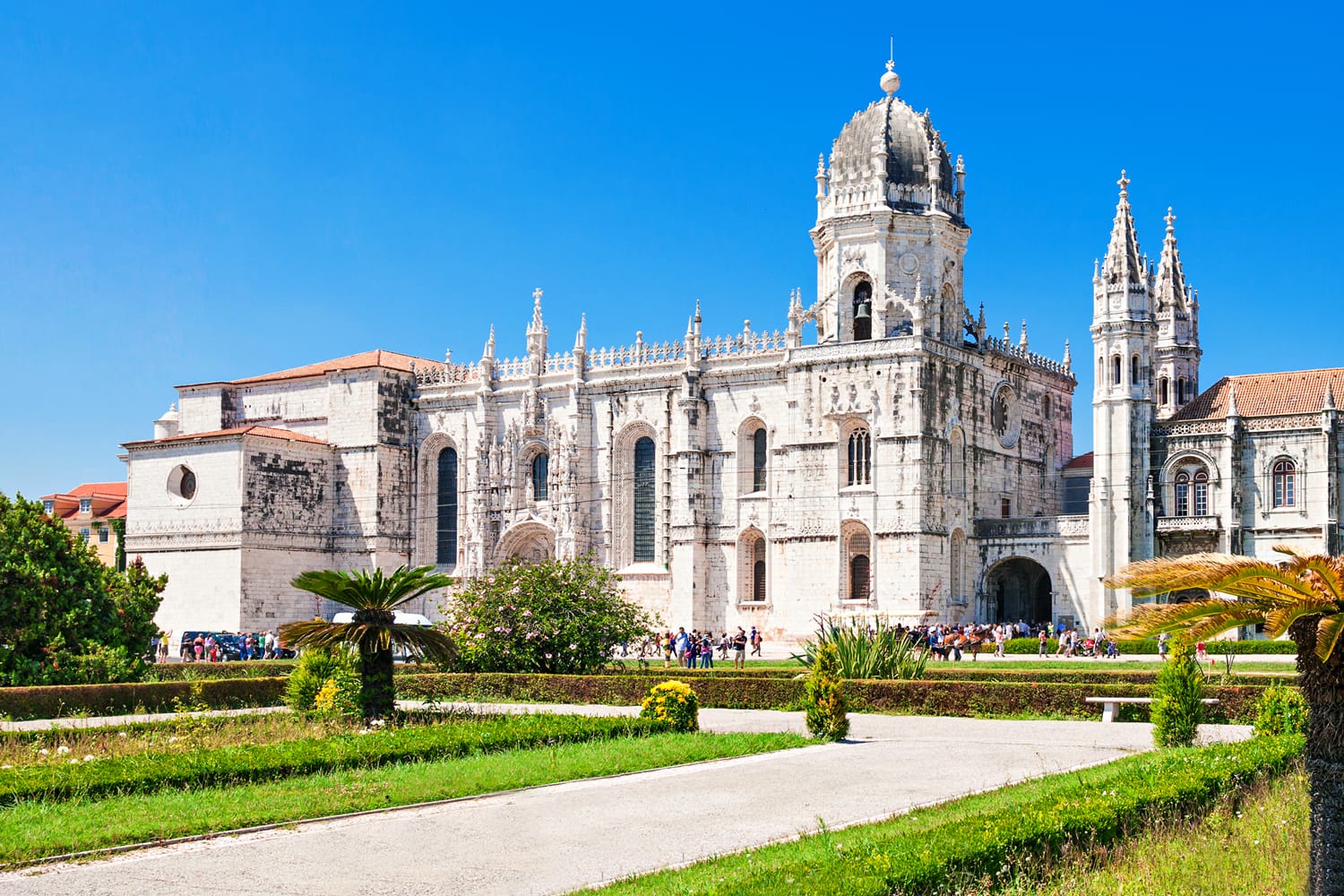
Day 6: Lisbon
There’s still so much more of Lisbon to be seen, with the seaside district of Belem the best place to start. This neighborhood lies in the western part of Lisbon and is simply unmissable on a first trip.
Head first to the Monastery de Jeronimos to try and beat the crowds. A UNESCO World Heritage Site, the monastery is incredibly popular thanks to its Gothic architecture throughout the chapel and cloister. You can purchase your entrance tickets here in advance.
Next, make a beeline across the gardens of the Praça do Império to see the mighty Monument to the Discoveries on the waterfront. This evocative monument celebrates the explorers who fueled the Age of Discovery and also offers a great viewing terrace from which to admire the sights of Belem.
Following the boulevard along the water’s edge, you’ll reach the iconic Belem Tower that once protected the river entrance into Lisbon. Having spent the morning sightseeing, reward yourself by heading to one of the local bakeries and indulging in one, or several, delicious pastel de nata pastries.
Heading back to Lisbon by either tram or foot along the riverfront, you’ll eventually reach the Alcantara neighborhood. Sticking to the waterfront area will give you the perfect vantage point of the gigantic Ponte 25 de Abril, which spans the river over to the city of Almada. Alcantara is also home to the LxFactory, a revitalized industrial space full of cafés, bars, and restaurants. For more details and ideas for visiting Lisbon, read our Lisbon itinerary.
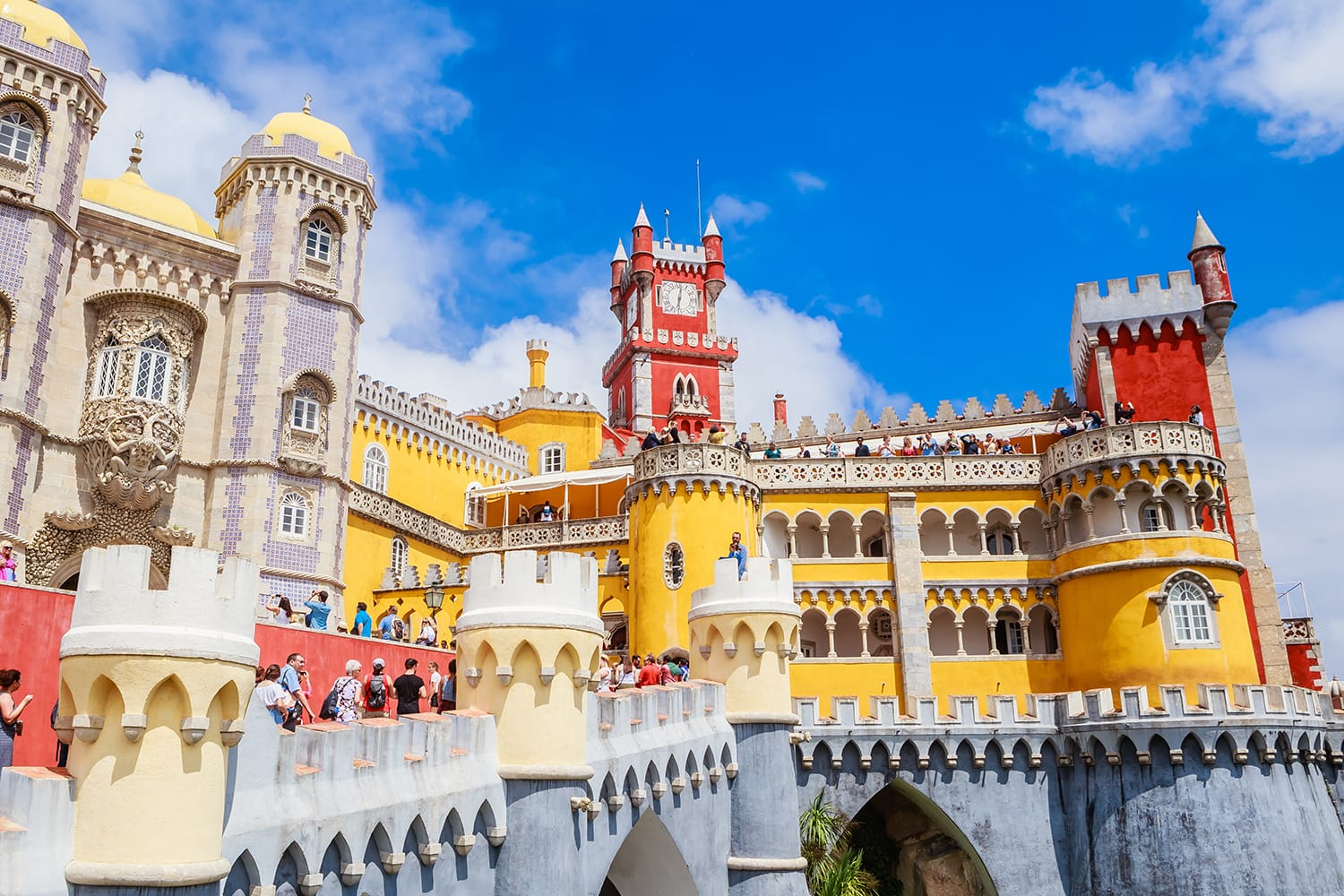
Day 7: Lisbon
You’re certainly not going to run out of things to do in Lisbon, but two days should be enough for the main attractions. Thus, the best way to make use of your last day is to experience some of the great destinations that are just a day trip away. Below you’ll find three of the most common day trips, but for more ideas consult our feature article on day trips from Lisbon.
- Sintra: Once a royal resort town among the hills and forests of the Sintra Mountains, Sintra is now a widely popular tourist destination. The town is home to many glamorous palaces, such as the Pena National Palace, which is in the hills and looks like something from a Disney movie. Closer to town, you’ll find the Quinta da Regaleira Palace and its famous spiraling well, plus the Sintra National Palace right in the town center. You can book a day tour to Sintra here.
- Cascais: The nearest seaside getaway for those in Lisbon is west of the city in the town of Cascais. It’s easy to relax there because of its noticeably calm atmosphere and a nice selection of beaches. As for attractions, you have the old Fortress of Our Lady of Light and the Lighthouse Museum of Santa Marta, both near the center of town, plus the cliffs and caves of the Boca do Inferno a little further up the coast. You can book a day tour to Cascais here.
- Obidos: While a little further away, the gorgeous walled town of Obidos is well worth the journey. Located in the rustic Portuguese countryside, Obidos sits on a hill completely protected by high stone walls and a castle keep. Within its walls are traditional homes painted white, yellow, and blue; they are beautiful both at street level and when viewed as you do a lap of the walls. You can book a day tour to Obidos here.
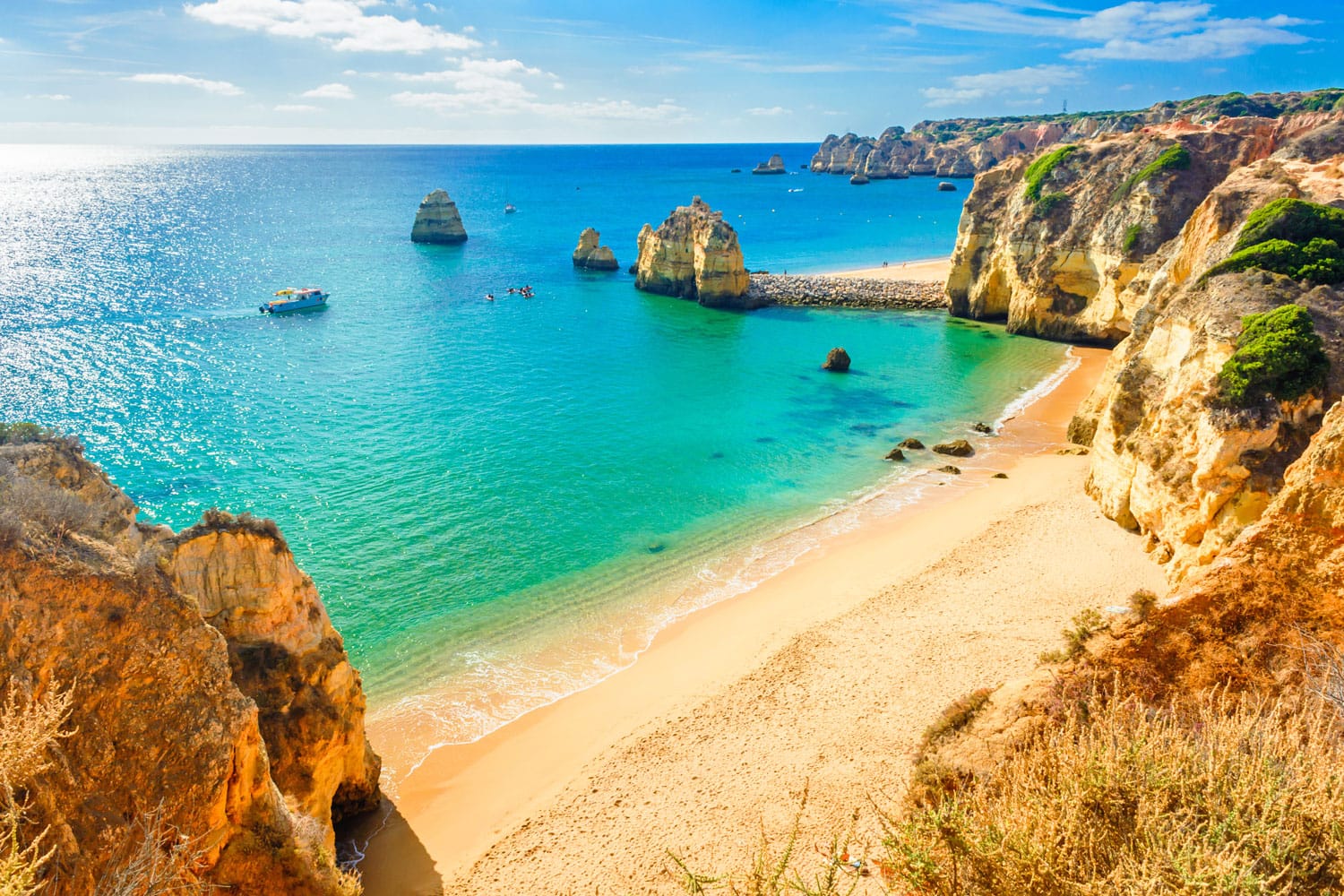
Day 8: Algarve
To finish off this cross-country trip, pay a visit to the gorgeous Algarve Coast. Stretching right across Portugal’s south coast on the Atlantic Ocean, the Algarve is full of wonderful seaside towns, sublime beaches, and fresh seafood.
Unlike other stops on this Portugal itinerary, this part is a little open-ended as there are many great towns in the Algarve where you can stay. Three of the main ones are:
- Faro: This moderately sized city is the capital of the Algarve region and is a gateway to the coast thanks to its international airport. Rather than sitting right by the seaside, Faro actually has rivers and a nature reserve between the city and its beaches. On the plus side, it features a lot of character and history, thanks to its walls around the small Old Town and noteworthy landmarks like the Faro Cathedral. Check hotel prices in Faro.
- Albufeira: Were it not for tourism, Albufeira would just be a small coastal town. Instead, it’s one of the most popular cities on the coast, with the perfect balance of traditional charm and wide sandy beaches. Here you’ll get your sun and sand but also a gorgeous whitewashed town that’s a joy to explore on foot. Check hotel prices in Albufeira.
- Portimao: The second largest city in the Algarve is Portimao, which offers a little of Faro and a little of Albufeira. A port town for much of its life, the Old Quarter still has the humble character of somewhere that relied on its fishing trade. However, head down to the coastal part of the city, Praia da Rocha, and you’ll find stunning beaches among the cliffs and all the modern conveniences. Check hotel prices in Portimao.
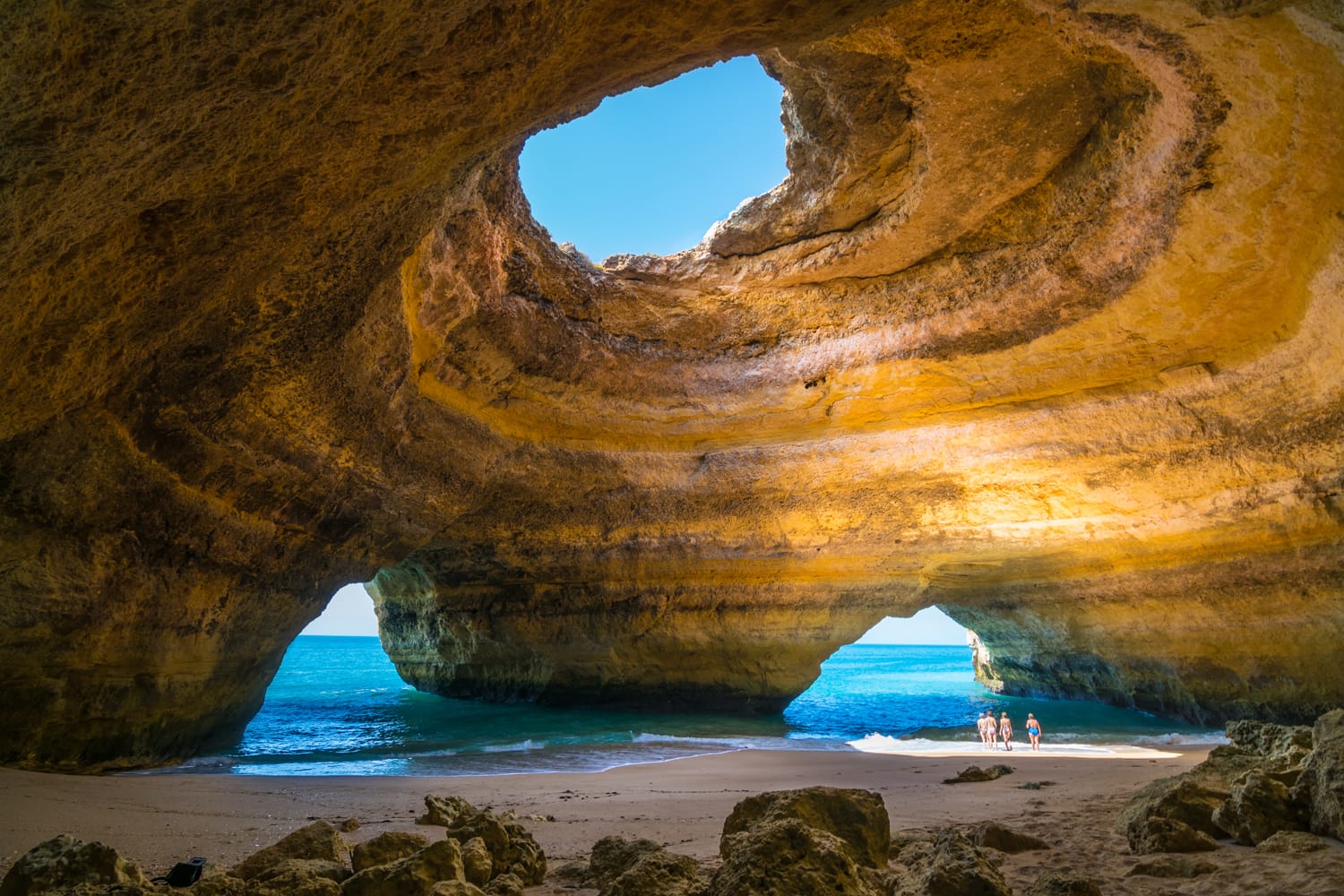
Day 9: Algarve
Now it’s time to see what else the Algarve has to offer with a day trip to some of the coast’s most iconic spots. These are the places that you’re bound to have seen online as photos of them instantly generate wanderlust and disbelief that they are indeed real.
- Benagil Cave: One look at this magical sea cave and you’ll understand why the Benagil Cave is so popular. This cave and the little beach inside are only accessible from the water, but what makes it so incredible is the small hole in the domed ceiling that lets sunlight pour in, creating a one-of-a-kind sight. Tours to the Benagil Cave run from Portimao and from Albufeira.
- Ponta da Piedade: The Algarve Coast is famed for its rocky coastline and cliffs, but there’s no better place for this kind of scenery than the Ponta da Piedade, south of Lagos. On this promontory, you’ll find sandstone cliffs and towers of crumbling rock concealing idyllic little beaches. With so many hard-to-reach beaches and little grottos, taking a boat tour to Ponta da Piedade from Lagos is the best way to get there.
- Sagres: Some of the best stretches of coastal cliffs along the Algarve are found by the small village of Sagres. Sitting right by the southwestern tip of the country, Sagres is a place long shaped by the elements. While you can visit man-made landmarks like the Sagres Fortress and old lighthouse, it’s the dramatic cliffs either side of this headland that will take your breath away.
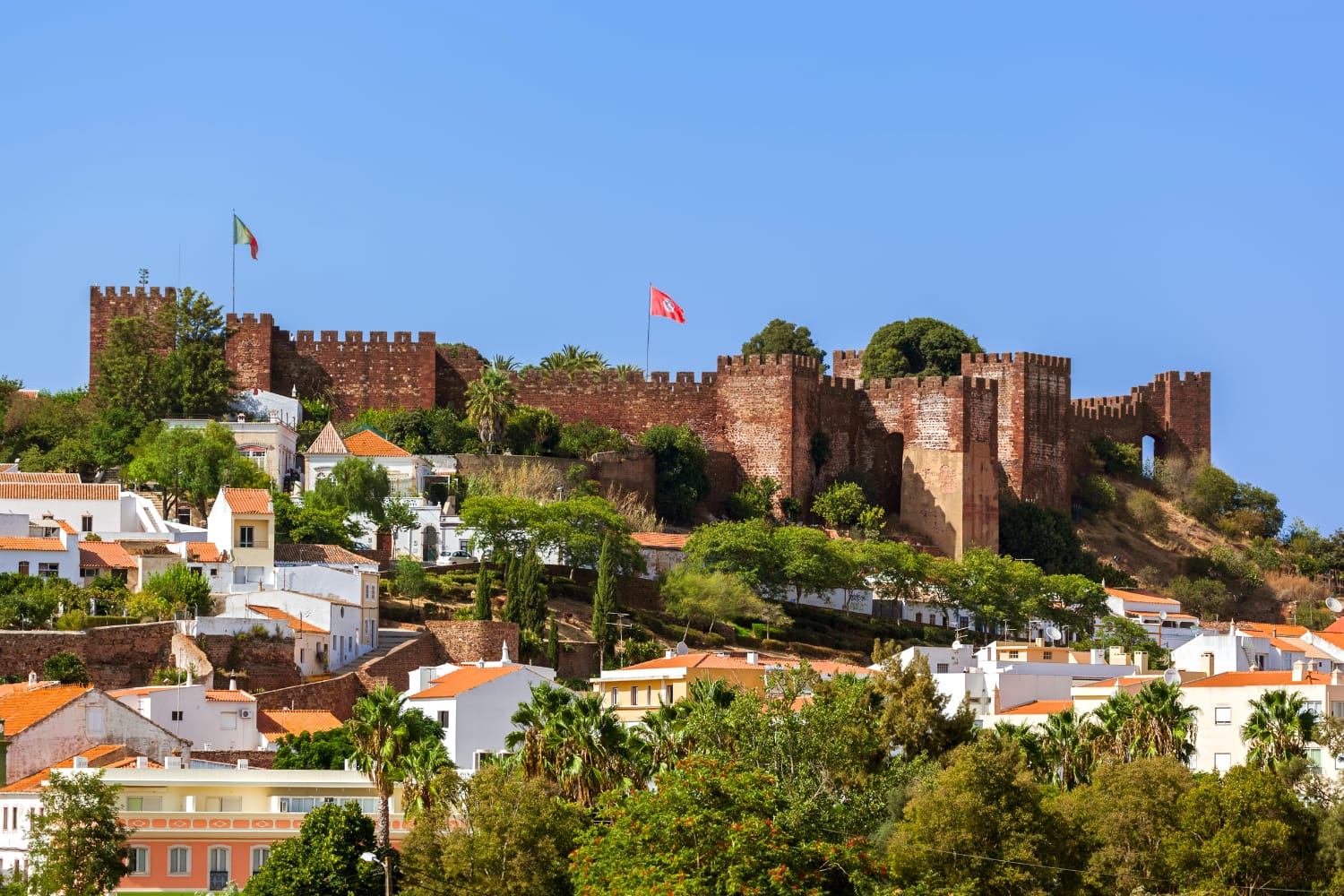
Day 10: Algarve
Even though the Algarve is most famous for its coastal attractions, the region also has quite an incredible hinterland worth exploring. With a day in the countryside, you get to trade in the Algarve’s beaches and rugged cliffs for its rustic landscapes and even a castle or two. What’s also nice is that these inland spots are bound to have fewer tourists than the coast. Some great day trips include:
- Silves: Probably the most popular inland destination is the town of Silves, thanks to its majestic castle. Dating from the Moorish period, Silves Castle is a classic and makes it easy to understand why the town was once the capital of the Kingdom of the Algarve. However, the town has even more to offer with its relaxed and rustic streets, not to mention the Ponte Romana De Silves, which runs over the small river.
- Loule: Not every place in the Algarve is solely reliant on tourism, as is the case with the lovely market town of Loule. Each weekend Loule hosts several large markets inside its market building that boasts a Moorish design and draws locals from all over. Besides the markets, the town also has a wonderfully authentic historical center and its own Moorish castle that now houses the Municipal Museum.
- Estoi: There’s really only two reasons to visit the little town of Estoi: the Palácio de Estoi and the Roman Villa of Milreu. The 19th-century palace makes a statement with its pink facade and pleasant gardens. Nearby, you’ll find the ancient ruins of a Roman villa, home to well-preserved mosaics from a Roman bathhouse.
Now that you’ve gone through how to spend 10 days in Portugal, you should be excited for the fantastic trip you have in front of you. After having seen all these awesome places, you won’t be able to wait to return and explore more!
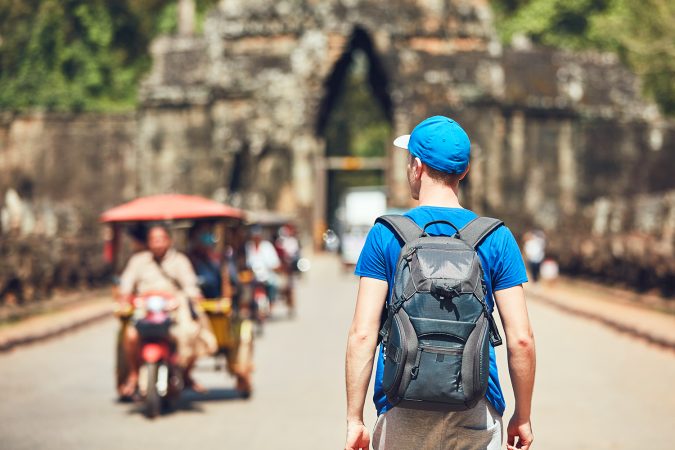
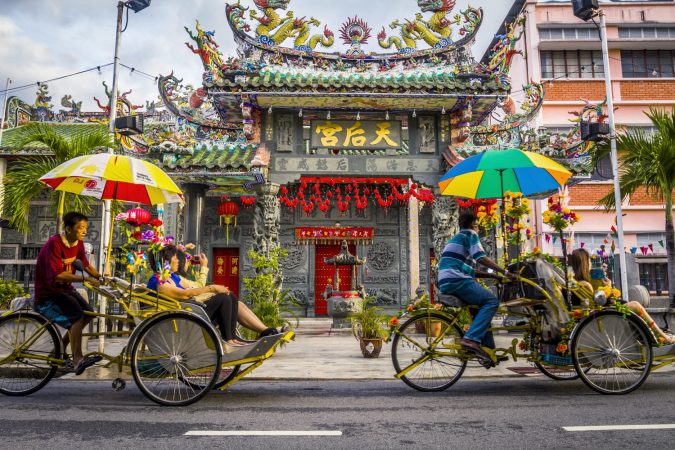
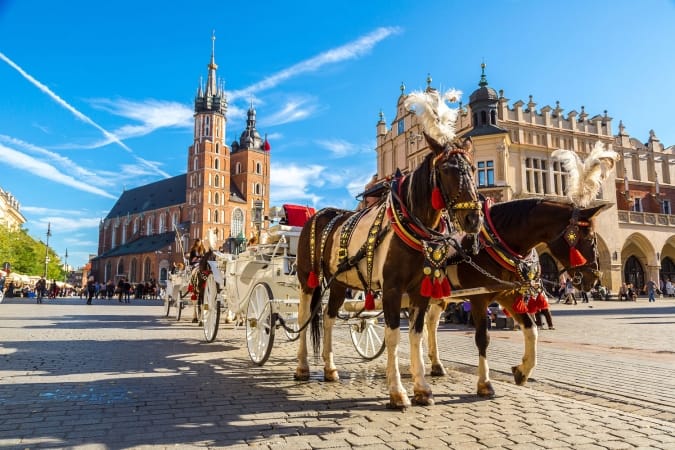
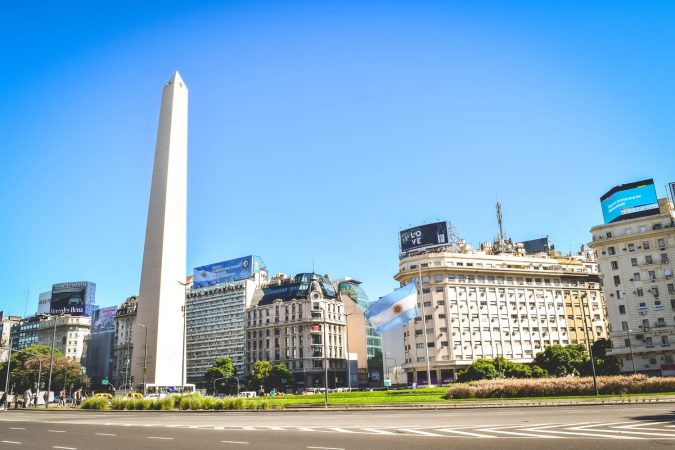
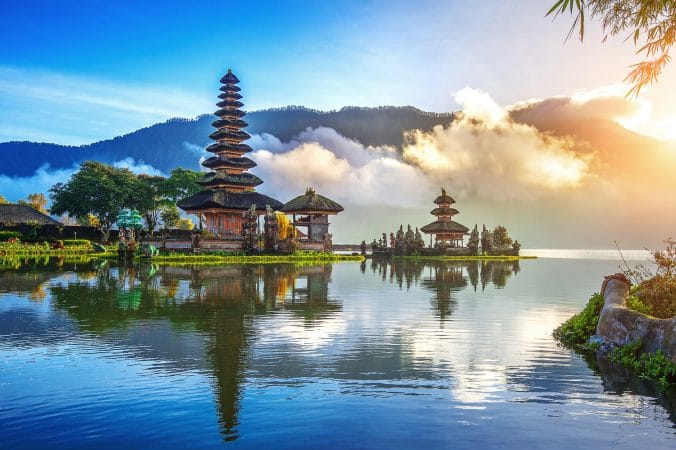
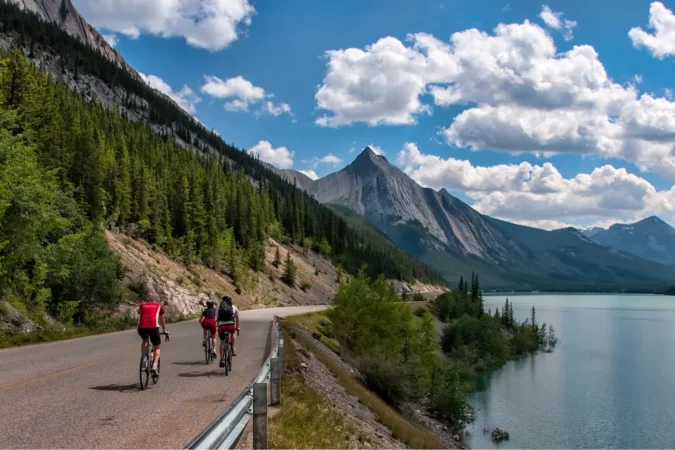

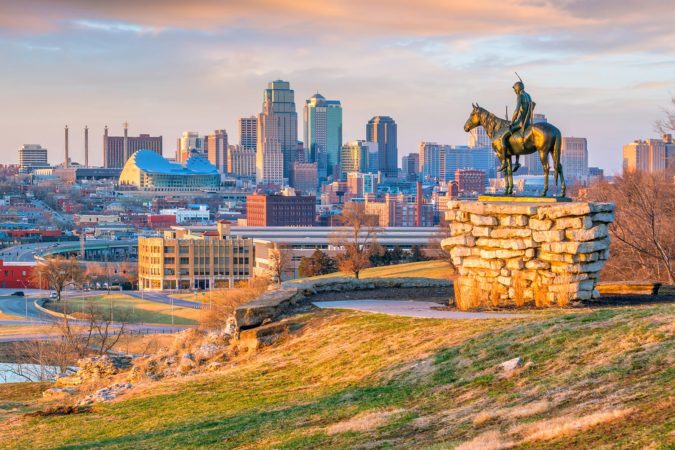
Comments